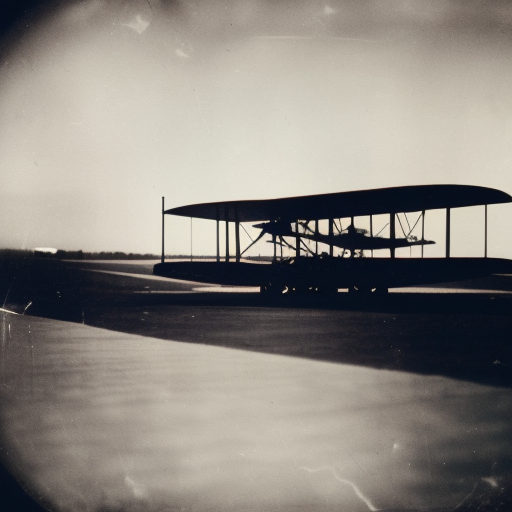Summary:
The Wright brothers, Orville and Wilbur, successfully achieved the first powered flight on December 17, 1903, near Kitty Hawk, North Carolina. Their aircraft, the Wright Flyer, was a biplane with a wingspan of 40 feet and a weight of 605 pounds. Orville piloted the first flight, covering a distance of 120 feet in 12 seconds. The brothers made a total of four flights that day, with Wilbur’s final flight covering 852 feet in 59 seconds. This groundbreaking achievement marked the birth of modern aviation.
Background:
The Wright brothers were inspired by the works of aviation pioneers such as Otto Lilienthal and Octave Chanute. They were determined to develop a flying machine that could be controlled in all three axes: pitch, roll, and yaw. After conducting extensive research and experimentation, the brothers designed and built their own aircraft.
The Wright Flyer:
The Wright Flyer was a biplane constructed using spruce wood and muslin fabric. It had a wingspan of 40 feet and a length of 21 feet 1 inch. The aircraft was powered by a 12-horsepower engine that drove two wooden propellers. The pilot lay prone on the lower wing, controlling the aircraft using a system of wires and pulleys. The Flyer also featured a movable horizontal tail to control pitch.
The First Flight:
On December 17, 1903, the Wright brothers attempted their first powered flight. Orville piloted the aircraft while Wilbur helped with the launch. The Flyer was positioned on a wooden rail, and a 60-foot launching track was used to gain initial speed. With a strong headwind, Orville managed to take off and fly for 120 feet in 12 seconds. This historic flight was witnessed by five witnesses and captured in a famous photograph.
Subsequent Flights:
Encouraged by the success of the first flight, the Wright brothers made three more flights that day. The second flight, piloted by Wilbur, covered a distance of 175 feet in 15 seconds. The third flight, again piloted by Wilbur, covered 200 feet in 15 seconds. The final flight of the day, piloted by Wilbur, covered an impressive 852 feet in 59 seconds. This marked the longest and most successful flight of the day.
Legacy:
The Wright brothers’ first flight was a monumental achievement that revolutionized the world of aviation. Their successful demonstration of controlled, powered flight paved the way for the development of modern aircraft. The principles and techniques they developed, such as wing-warping and three-axis control, became the foundation of aviation engineering. Their contributions to aviation earned them worldwide recognition and established them as pioneers in the field.
Conclusion:
On December 17, 1903, the Wright brothers achieved the first powered flight in history. Their aircraft, the Wright Flyer, covered a distance of 120 feet in 12 seconds. Over the course of four flights, the brothers demonstrated the feasibility of controlled, powered flight. Their groundbreaking achievement marked the beginning of a new era in aviation and laid the foundation for the development of modern aircraft. The Wright brothers’ legacy continues to inspire and influence the field of aviation to this day.












